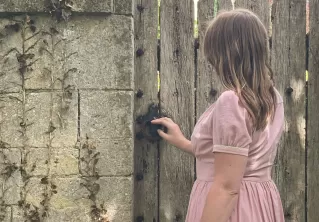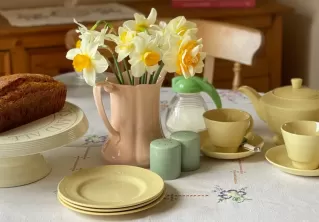Beryl by Woods Ware: 1940s & 1950s British Utility China
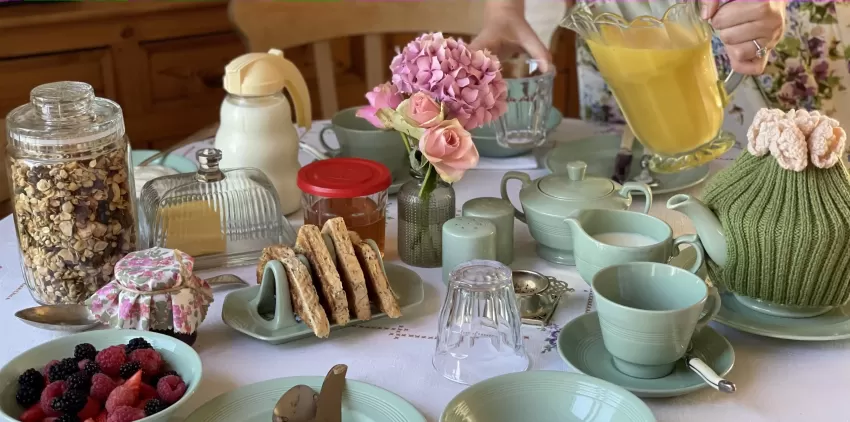
If I had a pound coin for every time someone asked me where my dinner service was from, I’d be a very wealthy lady! The soft mint green has a timeless appeal that is just the right amount of vintage without being too “flowery”. It appeals to my Ma Larkin tastes perfectly. The irony is, it’s nothing fancy and most of it is bought for pocket change! Let me introduce you to my very pretty and popular friend, Beryl. I’m sure you might already go way back…
The history of Beryl Ware
The first memory I can recall of coming into contact with Berylware is during my extra-curricular activities as a child. I can distinctly remember it in the kitchens of the hall in which I attended ballroom dancing lessons, and later, in the canteen of my church youth group. It is part of the furniture for most British people, but has had a bit of a revival in recent years with many new collectors springing up, young and old alike, to use in their own homes.
Wood & Sons was established in 1865 by Absalom Wood and his son T. F. Wood. The business traded first as Wood & Son, then as Wood & Sons (from c.1907) and was incorporated as Wood & Sons Ltd, in 1910. They were part of the ‘Staffordshire Potteries’ and production lasted until 1995. One of their staple designs was the ‘Burlington’ shape (which is now mostly known by it’s colour - Beryl), was so popular that millions of pieces were made over the course of its production, and it has become a bit of a wartime and post-war classic.
For those of us interested in Home Front history, you couldn’t really find a better fit. Especially, if like me, you are also a fan of wartime and mid-century period dramas, namely Foyle’s War, Call the Midwife, and Housewife 49 - then you might have spotted a bit of Berylware on your televisions from time to time. DCS Foyle and his driver Samantha regularly have tea in his office from a spot of Woods Ware, many a scene from Call the Midwife in the ante-natal clinic has featured it, and the WVS are handing out cups of tea in the opening scenes of Housewife 49.
It’s nothing fancy, nothing special - this china just “gets on with it”, in true British fashion.
It takes me back more than 55 years when I worked in a children’s home, the table was always set in Woodsware. Olive F, a fellow collector
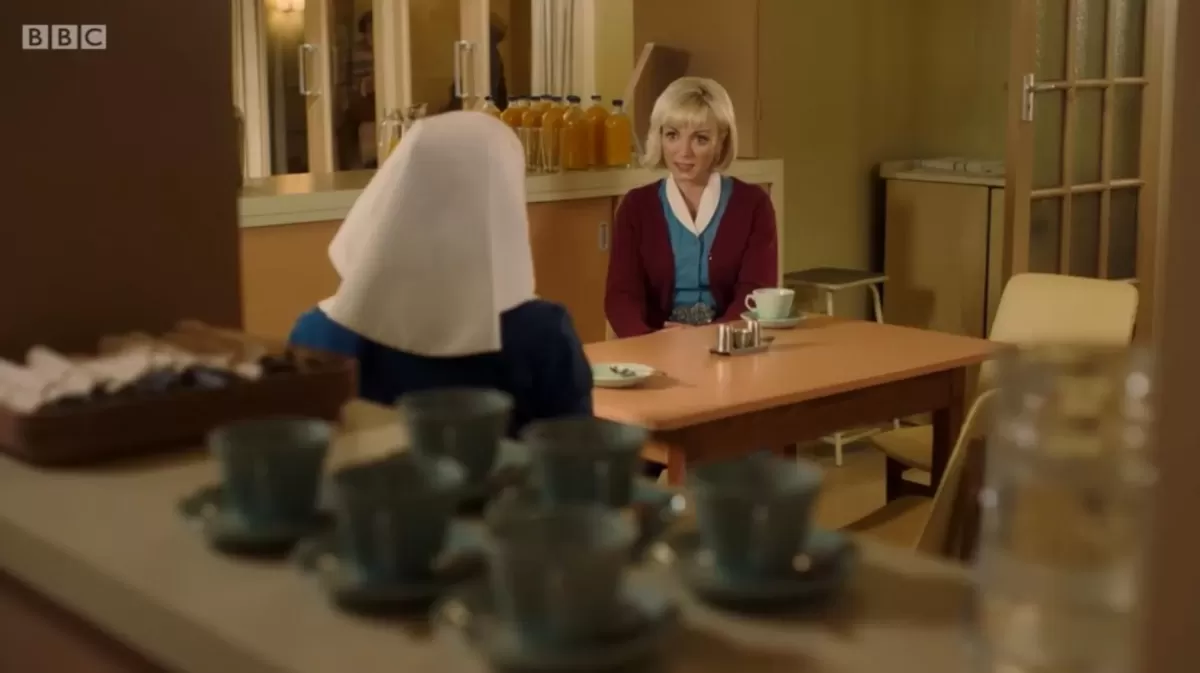 Nurse Trixie Franklin enjoying a cuppa in some Beryl ware
Nurse Trixie Franklin enjoying a cuppa in some Beryl ware
It is an iconic design that dates from the early 1940s (no one is sure of exactly when it began production, some believe as early as the mid-late 1930s), and is synonymous with village and church halls all over Britain. Some school and hospital canteens used it, and the odd British Restaurant too.
Later, it crept into domestic use as it was the standard-issue earthenware during the war. Many people who were bombed out would need to replace their china and this was a popular choice at the time should one be “buying new” with coupons in wartime and post-war Britain.
Manufacturing rules and shortages at the time meant that designs had to be kept simple, using as few resources and man-hours as possible in producing homeware - and this pattern by Woods fit the bill perfectly. Beryl may be simple in her design, but the banded lines and little art deco flourishes on the handles of teacups and jugs give her a slightly elevated flair. She may be utilitarian, but her elegance remains. Her popularity endured so much that many were still buying it new from John Lewis well into the early 1990s.
Sadly, the Wood & Sons factory closed in 1995, putting an end to its 130 year history.
For me woods ware typified the sense of community and camaraderie that was there in difficult times, something we are sometimes missing today, a cup of tea in a woods ware cup is the answer to most problems! Julia E, a fellow collector
Beryl, Jasmine, and Iris by Woods Ware
Though Beryl is not rare, she does have some sisters who are slightly more elusive and harder for collectors to find. Jasmine, is a beautiful powdery yellow, and Iris a soft cornflour blue. It’s easy to come across dinner plates and teacups in these colours, but rarer to find more decorative and occasional pieces.
There are also whispers among the collectors community of a pink colour-way that was used in hospitals for infectious patients (and destroyed after use), but as no evidence of this has ever materialised she remains a bit of a fictitious fantasy.
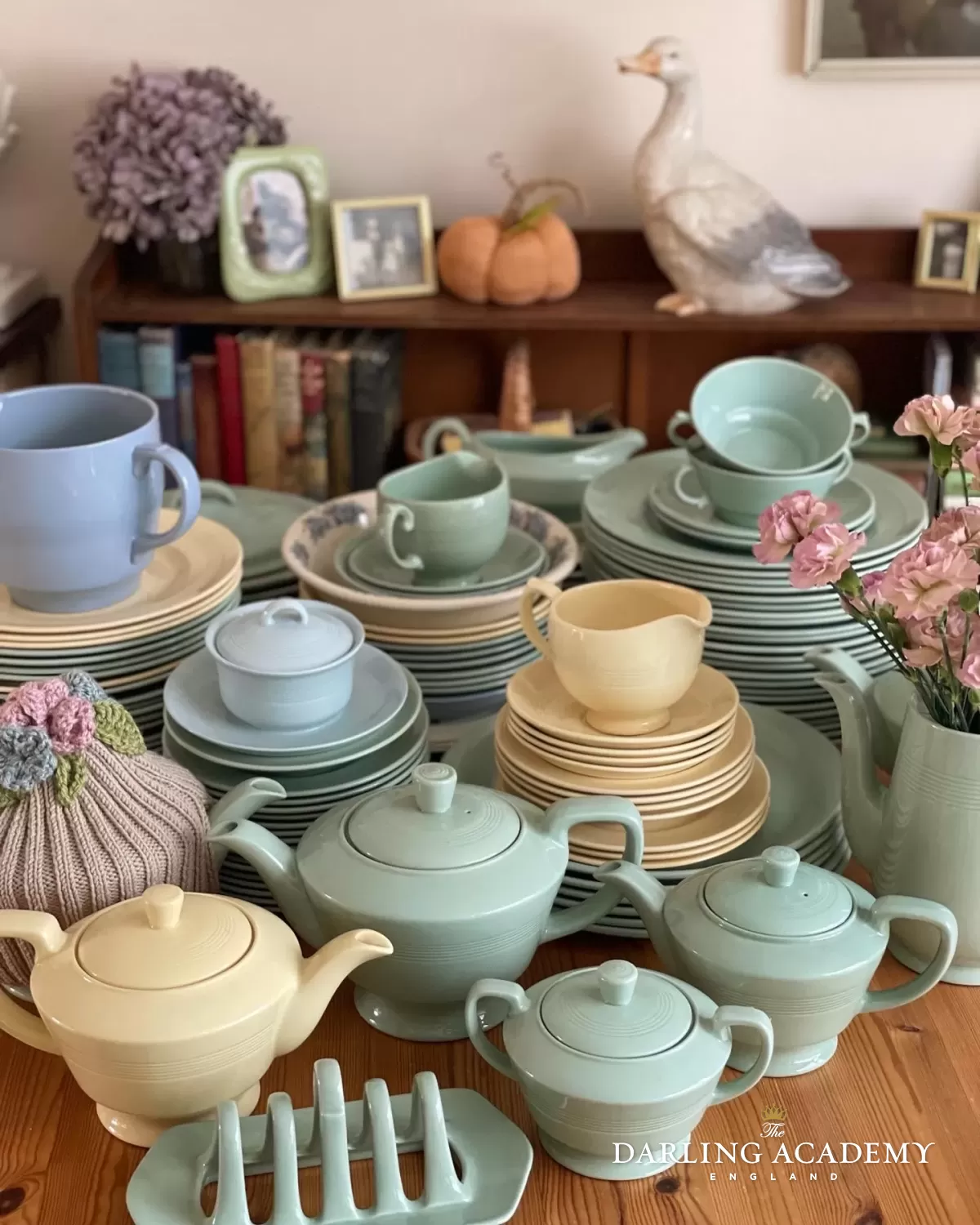 My collection of Beryl, Jasmine & Iris
My collection of Beryl, Jasmine & Iris
The very first items of Woods Ware I ever owned were two large oval Jasmine platters, given to me by my parent’s elderly neighbour when I flew the nest at 18. I loved the cheerful colour, but sadly was too influenced by a boyfriend at the time who didn’t like them, so they were later donated. I regret both actions from that time in my life ;)
I have tried very hard over the years not to get too enthusiastic about collecting the other colours, but sometimes you just can’t resist. I have a small set of Jasmine which is about enough for a picnic basket (a set for 4), and the only piece of Iris that I cannot be parted with is a rather rare muffin dish. She is actually so pale, I think she often looks a bit “Beryl-like” in a certain light, and she can stay in my collection until the day I find a true Beryl one.
You do need to be careful because if you decide to collect then it’s a slippery slope and you can find yourself in hot water with no where to store it all. Prices for certain items can skyrocket but you just won’t care because you just have to have it!!!
Woods weren’t the only manufacturers producing utility ware in the mid-century. Many popular designs were made in similar colours by J.G. Meakin and Johnson Brothers too. In fact, sometimes they are often mistaken for one another, but that only adds to the charm of the ranges in that they go so well together. A lot of collectors have pieces from many of these ranges and like to mix-and-match their china.
It’s the comfort it brings me, that despite the world changing, it’s a steadfast part of the traditional rituals in my life. It reminds me of teas on the lawn in summer, village halls and Cricket teas but also of cosy, dark Sunday nights with sandwiches, tea and cake. Gemma W, a fellow collector
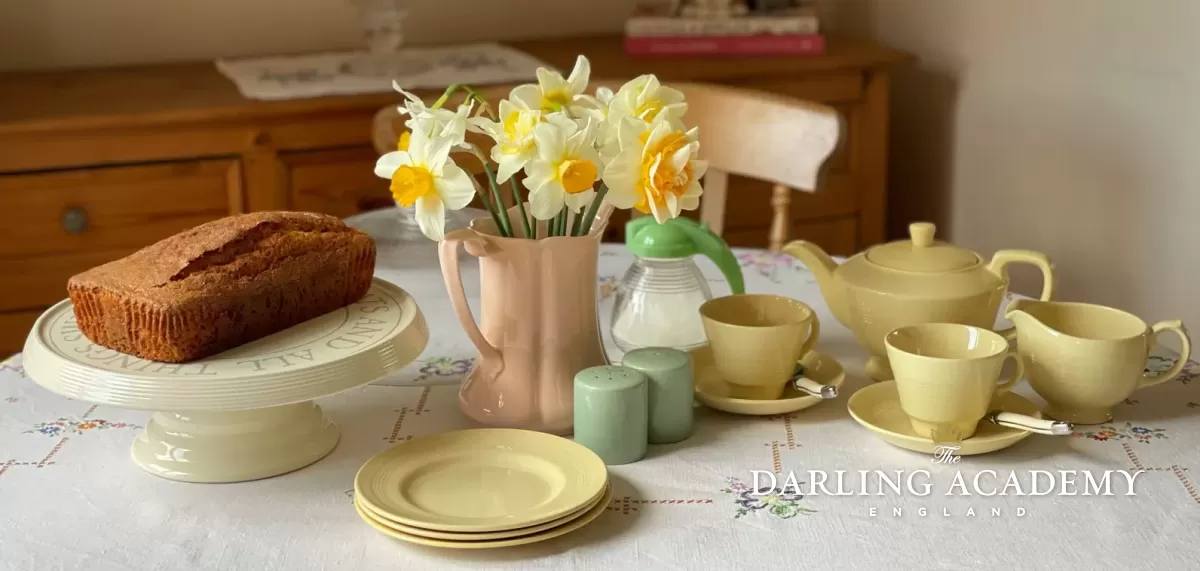 My yellow Jasmine, with a pink jug by Johnson Bros
My yellow Jasmine, with a pink jug by Johnson Bros
What are the rarest pieces of Beryl Woods Ware?
I am a member of two collectors groups on Facebook, “Woods Ware” and “Utility China & Vintage Homeware” where we share our collections, recent finds, and chat about all things pottery. It’s incredible to see random and rare pieces pop up for sale, or have been found, that even the most avid collectors have never even sighted before - and we love to all speculate on whether they might have been samples, or from unique ranges and made-to-order items.
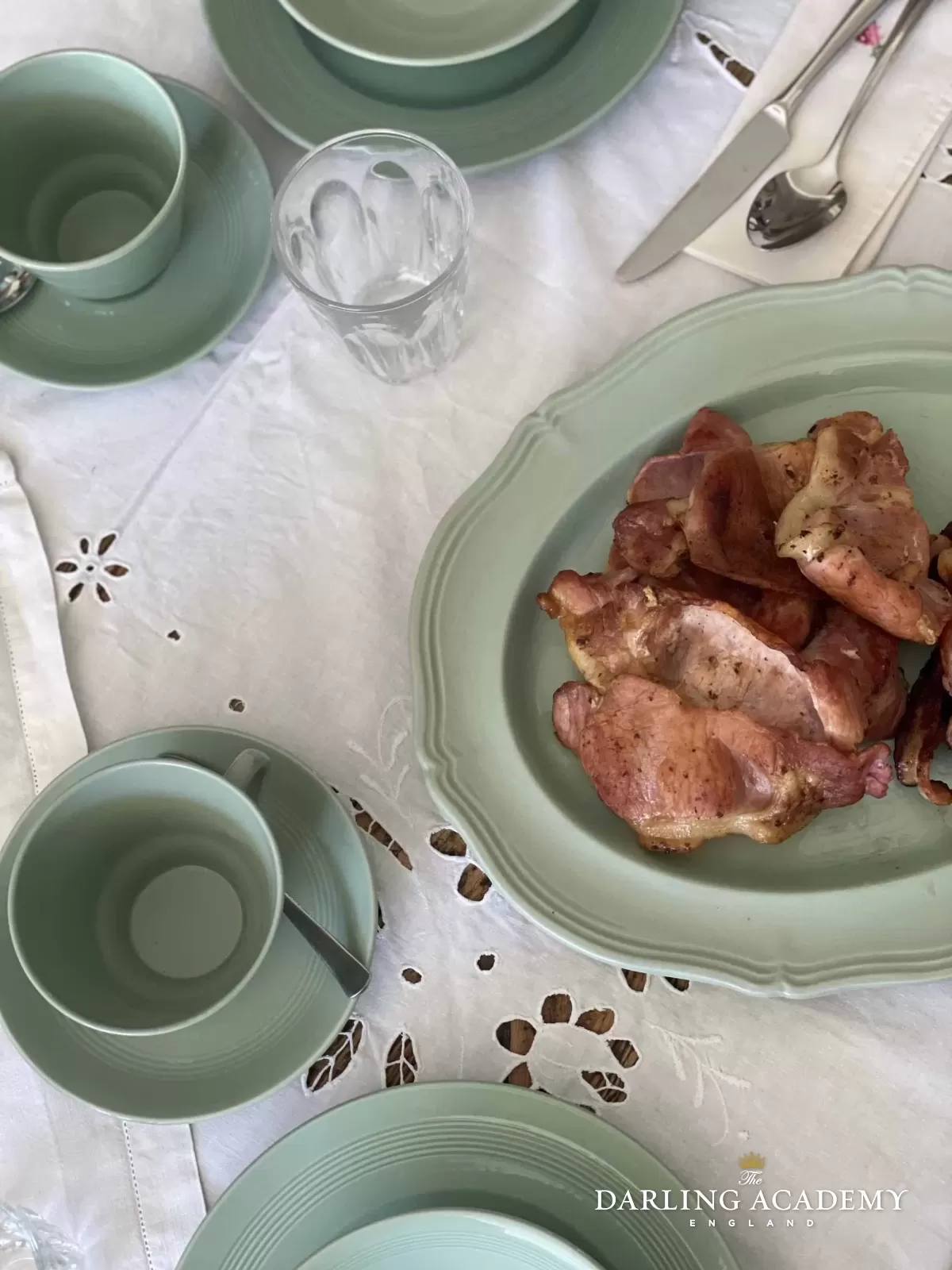 A rare scallop-edge platter belonging to a friend
A rare scallop-edge platter belonging to a friend
Considering the entire range was in production until the closure of Woods’ factory in the mid-90s there was plenty of scope for the manufacturers to try out new designs and test them on the market.
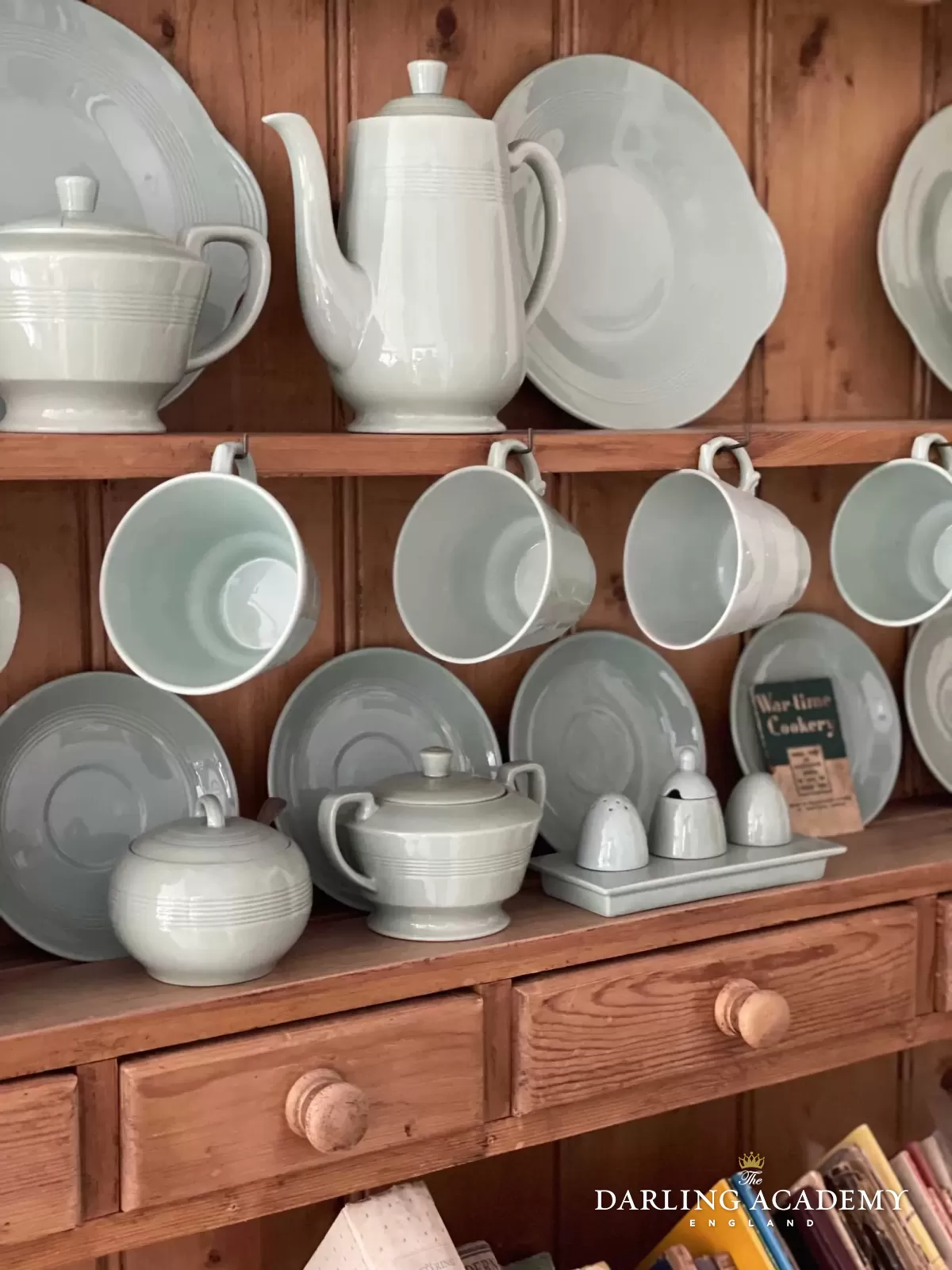 The round sugar bowl of dreams
The round sugar bowl of dreams
The ones we all seem to covet are the elusive toast rack, double handled sugar bowls, cruet set, and the hot water/chocolate pot (I’m personally not interested in that piece). However if you decided to hand me the spherical sugar bowl I would think all my Christmasses had come at once - and I don’t even take sugar! It is the last thing on my wish list that I am yet to find, and I want it because the design is just dreamy, no other reason!
Rare items can go for tens, if not hundreds of pounds on places like eBay, but I like the thrill of the hunt and have chosen to wait for things to turn up serendipitously in charity shops or car boot sales.
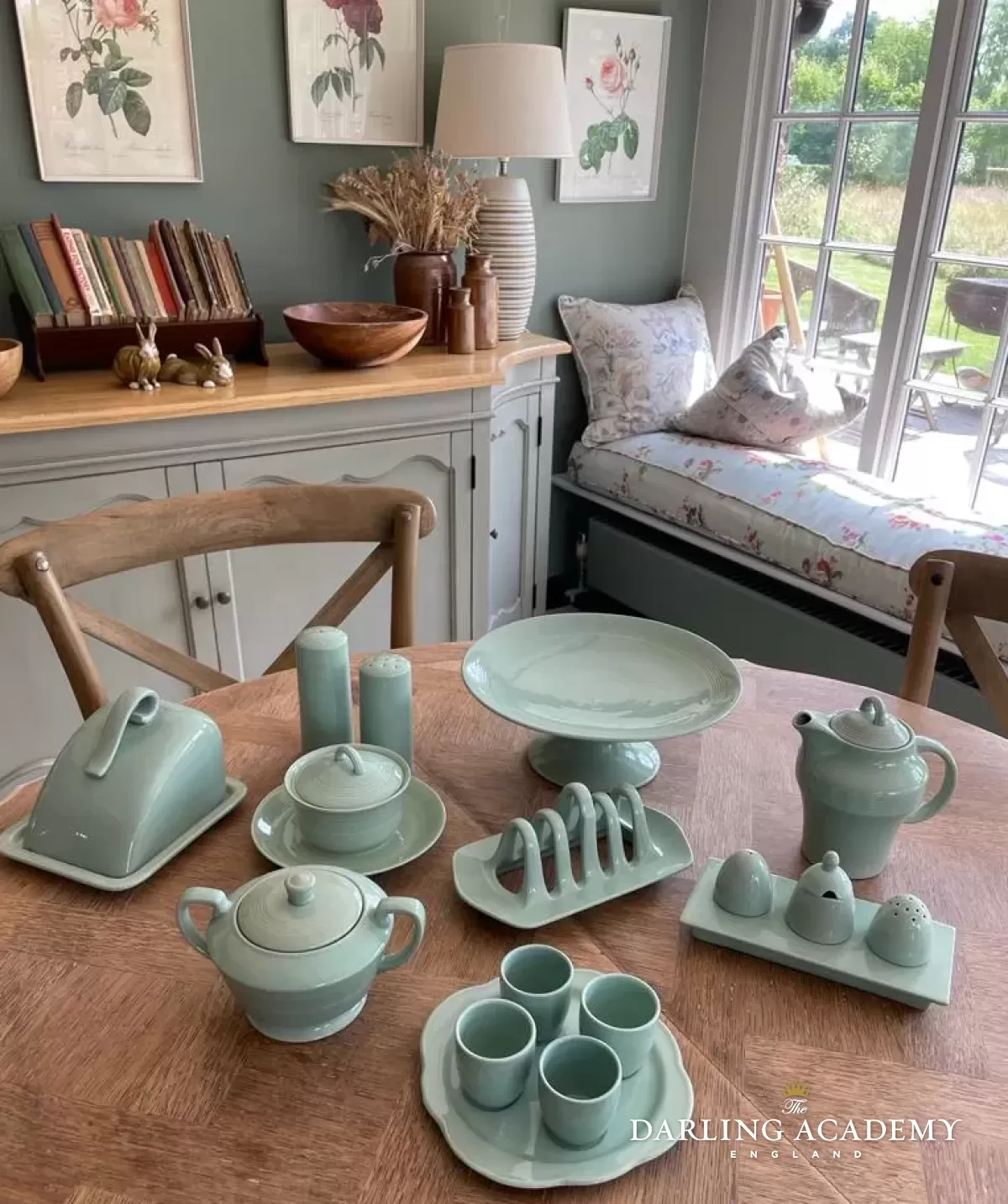 Some of the rarest items of Berylware
Some of the rarest items of Berylware
These rare pieces in the photo above all belong to a fellow collector. She kindly took this picture for me so you could see the diversity of the design and some of the rarest pieces available. The cake stand was a complete surprise to most collectors!
Where to find and buy Beryl Ware
I’ve had the best luck from Facebook Marketplace. I started off my collection rather handsomely a few years ago with a job lot a lady was selling that used to belong to her Aunt. I think I purchased around 50 pieces for the grand sum of £30. I’ve added a lot to it over time from various charity shops, and have traded with fellow collectors. The Chinasearch website is also a great resource for things you might want, but be warned, they do like to hike the prices, and you may need to wait for a long time.
I was on the waiting list for a certain bowl for more than two years before they managed to source one. Meanwhile, a friend found three in a charity shop! It can be a cruel game…
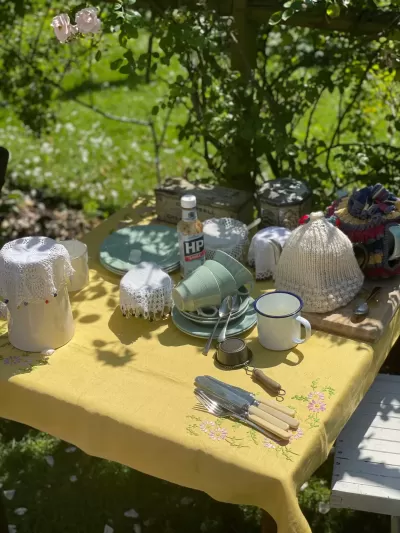
Churches and Village Halls often list their stashes on ebay or Facebook marketplace too, but they usually are sold as very large job lots - not many people have need for 100+ teacups and saucers.
My best advice would be to talk about it. Perhaps once you’ve got a few pieces in your collection, show them off to close friends and family and ask them to keep their eyes peeled for you in the charity shops! Just be mindful that they might mistake them for other utility ranges (Meakin/Johnson) so perhaps try and train them to snap a picture and send to you right then and there to grab your attention. Then let them know if it’s the right thing.
My husband and son know to look out for Beryl whenever we go into a charity shop. Many pairs of eyes helps in the hunt.
These are also some favourable places and sellers online to find Beryl.
The Vintage Kitchen Store
ClutterfingersRetro (etsy store)
EdiePegg (a favourite etsy store)
Woods & Sons was a British manufacturer, and I am not aware of them having operated a market for export, and as such people outside of the UK find it hard to find, but I know that even people in Australia have had a bit of luck in uncovering some treasure.
In nearly 80 or 90 years, I am sure some of it made it over the pond at some point. Or, if you are happy to pay for eye-watering shipping costs, then most people will post. Do be aware that you’ll be having kittens until it arrives though. I’ve had two or three rare items arrive on my doorstep in pieces. It’s a risk all collectors take, but one that is often worth it.
For me, I like the longevity of Woods Ware; the way it has upheld generations of people, serving a basic need and creating a legacy through something so simple as community without any need to frills. The delicious buttery yellow of jasmine ware is also just stunningly beautiful. Heather C, a fellow collector
![]()
Why I collect Beryl Ware
To me its simple, I like simple things. I like homely things, and there is something so enduring and reassuring about this simple green earthenware. Every time I lay out a nice table it makes me smile, not least because it feels a little unique among a sea of modern white plates but I like the things in my house to have history and a story.
Little acts like making a cup of tea from a pot that has been held by many hands, and while this design is nothing “special” in the grand scheme of riches and wealth among all the Herend, Versace, and Limoges, it feels more in-line with my lifestyle. I could covet some incredibly expensive porcelain that requires hand-washing* and kid gloves - but things that can “do life” with me set my world on fire.
(* Yes, I put my Beryl in the dishwasher daily, as long as its not crazed, it is absolutely fine)!
I like to choose utility in most things. Basic household items that are built to last and can withstand the knocks are worth the money in my mind, ironic that they so often cost very little money but can often give a lifetime of service.
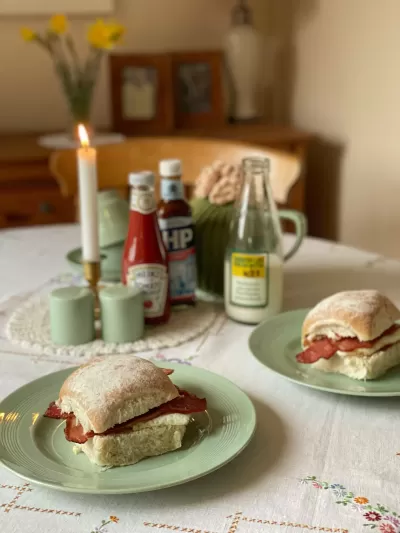 When I eat a slice of cake, or sip a cup of tea I wonder if my plate or cup came from a church hall where the congregation prayed and worshipped just moments before that restorative brew and bake.
When I eat a slice of cake, or sip a cup of tea I wonder if my plate or cup came from a church hall where the congregation prayed and worshipped just moments before that restorative brew and bake.
Did it replace someone’s beloved antique china that was destroyed in an air raid? The woman of the house probably hating that she had to use something so common and basic, not knowing the beauty others would find in it decades later.
Take me to any living history museum, or antiques centre and I’m heading straight to the “domestic life” section. I like to look at and handle the things that women who have gone before me, tending to their houses and families, would have likely touched and used too.
It also helps that it’s one of my favourite colours and makes all things look rather scrumptious!
I know it’s probably something only the vintage Woods obsessives, domestic types, and people who have a love for china will understand, but I hope you enjoyed this little chat about my love for Beryl. I think my husband will be pretty happy to hear that I have stopped collecting items as we have a full service and are bursting at the seams with it now.
I think it’s high time to look for a lovely big dresser to display it all now. What say you, Mr Darling!?
The only remaining thing I hope will one day come my way is that rather pretty round sugar bowl, which will probably just gather dust - oh a girl can dream!
With love from my home to yours,

A few disclaimers
Please note that I, Alena Kate Pettitt, can bear no responsibility or accept blame for an irrational new obsession that will drain your bank account faster than you can say “teacup”. Collect at your own risk!
I am also not an expert on the subject, this is just an amalgam of information and knowledge I have gathered from various sources and fellow collectors over the years. If there is any pressing or fun information about Beryl that you think I should include for readers to enjoy, please do feel free to email me!
You can also grab a lovely Beryl Tea Towel now, via the lovely people at Woods Pottery if your collection needs a little something extra.
As always, thank you ever so much to our Patrons. If you like The Darling Academy and our content, would you kindly consider supporting the blog by buying a one-off cup of tea? Served in a Beryl breakfast cup, of course!
All content and images in this article are copyright of The Darling Academy and are not to be shared or reproduced without our express permission.


